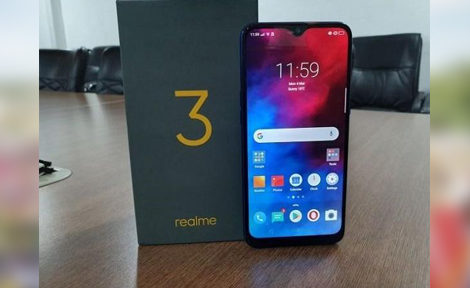Samsung launches new flagship Galaxy S models at the start of every year. This year, a lot was expected from the Korean manufacturer, especially as we were eager to see what design direction it would take. Ever since the Samsung Galaxy S8 (Review), Samsung has stuck with its tall Infinity displays, clearly showing no intention of going for the same notches as everyone else. Its last flagship-class smartphone, the Galaxy Note 9 (Review), also still had its front cameras above the display, but the Galaxy S10 series are the first phones to launch with a more modern look that finally gets rid of all the borders around the screen. The Galaxy S10 series, launched in San Francisco just ahead of the Mobile World Congress in Barcelona, marked the debut of Samsung’s new Infinity-O screens which stretch to all corners of the front of these phones and have punch-holes for the front cameras.
Samsung launched three smartphones, namely the Galaxy S10e ₹ 55,900, the Galaxy S10, and the Galaxy S10+ at the same time. Unlike the Galaxy S9 ₹ 46,300 (Review) and Galaxy S9+ ₹ 46,800 (Review) which had different rear camera setups, the Galaxy S10 and Galaxy S10+ have the same three cameras at the back. Where they differ (apart from screen size and battery capacity) is their selfie cameras. The Galaxy S10+ has two front cameras, while the Galaxy S10 has to do with a single selfie shooter.
In a way, the Galaxy S10+ is the best smartphone that Samsung has to offer at this time. Is it good enough to fight off the iPhone XS Max (Review), Google Pixel 3 XL ₹ 67,790 (Review) and Huawei Mate 20 Pro ₹ 69,990 (Review)? We review to find out.
Samsung Galaxy S10+ design
Samsung is known for interesting designs. While every other Android manufacturer was looking at adopting a display notch, Samsung resisted the move and stuck with the traditional rectangular display format. The new Samsung Galaxy S10 lineup can be seen as the company’s attempt to maximise display size and minimise borders.
The Galaxy S10+ comes in five finishes in India and uses two different materials for the back panel. If you opt for the base configuration with 8GB of RAM and 128GB of storage, you can choose between Prism White, Prism Black, and Prism Blue. If you want the ceramic finishes, you can buy this phone with 8GB of RAM and 512GB of storage in Ceramic Black, or pick the top-end Ceramic White option with a whopping 12GB of RAM and 1TB of storage. That’s the case at the time of publishing this review; it isn’t known whether Samsung will make different configurations available in different finishes in the future. We had the Prism White unit for review, and we liked the way it shifts colour when light hits it at different angles.
Pick the phone up and it is evident that the bezels are super thin at the top and the sides, helping it look like a bezel-less phone. The bottom chin is comparatively thicker. Above the display, the earpiece grille is moved towards the frame, which liberates some screen space. The oval-shaped hole is in the upper right corner of the screen houses a dual camera setup. It is more easily noticeable here than on the Honor View 20 ₹ 37,999 (Review), which has a smaller hole for its single selfie camera. Samsung refers to this as the Infinity-O display and it is rounded at the edges.
Samsung has curved the sides of this phone’s frame which makes it easy to hold, and at the same time helps the display and the glass back merge seamlessly. You will barely feel the transition from the frame to the glass back when you run your fingers across the surfaces.
At the back, there are three cameras arranged in a horizontal strip, similar to the dual-camera arrangement on the Galaxy Note 9. The heart rate and oxygen saturation sensors are placed in the same module alongside the LED flash. This camera module has a slightly raised metal rim. It isn’t significant enough to cause the phone to rock when placed on a flat surface.
You won’t find a traditional fingerprint scanner at the back of this smartphone like with the Galaxy S9 or Galaxy Note 9. Instead, Samsung has gone for an ultrasonic in-display sensor. This is the first Samsung smartphone to have such a feature and it is positioned towards the bottom of the display, above the on-screen home button. The placement is convenient and the sensor area can be reached easily when holding the phone in one hand.
We found the power button placement to be a little too high on the right side of the Galaxy S10+ and it was a bit hard to reach. Just like other recent Galaxy S series smartphones, there’s a dedicated Bixby button placed below the volume buttons on the left. All the buttons are made out of metal and have a reassuring click when pressed.
Source:
https://gadgets.ndtv.com/mobiles/reviews/samsung-s10-plus-review-india-price-galaxy-s10-plus-2002940?pfrom=home-tech







